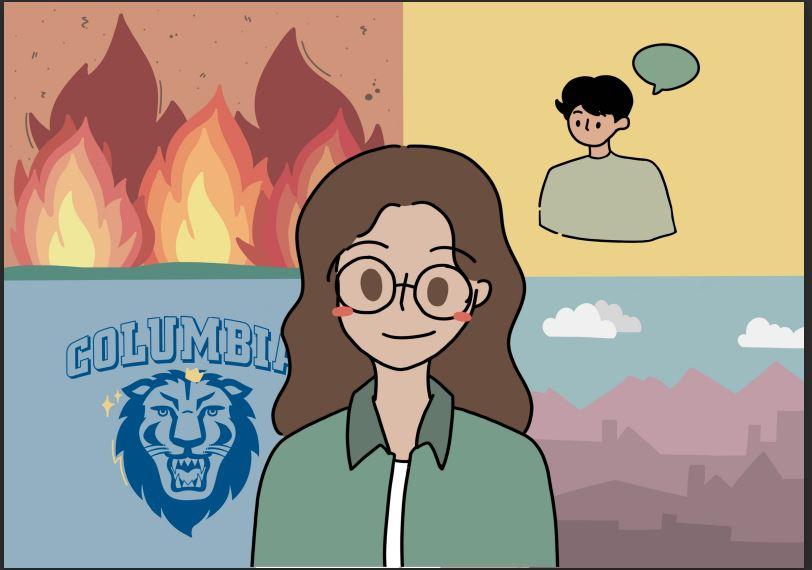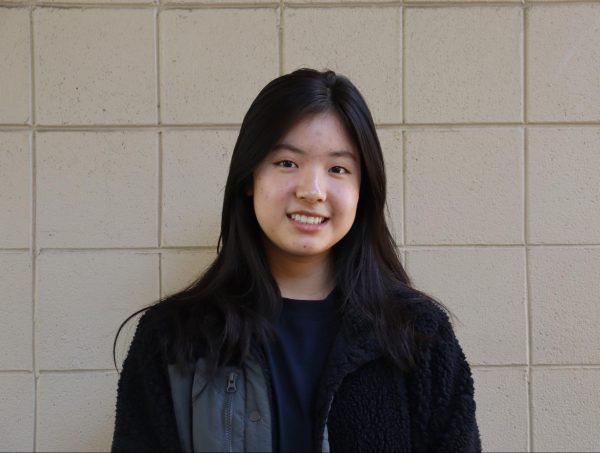Stuck as a freshman in the pandemic lockdown, Kyleen Liao, now a junior, looked out the window to the sight of red smoke blanketing the sky from wildfires. The fires obstructed access to clean air and harmed sensitive groups.
One challenge, though, was that measures of air quality or AQI (Air Quality Index; a measure of how clean or polluted the air is) weren’t always accurate or helpful.
Seeing a chance to help, Liao was determined to improve the imprecise predictions of air quality available to the public.
Since 2021, Liao has been working on a web application that better predicts air quality using Graph Neural Networks, a type of machine learning (ML) model that can make predictions based on data represented as a graph. Since the movement of air pollutants can be displayed as a graph, the model allows for a clearer understanding of local relationships and trends in the AQI values.
Through her app, Liao is aiming to encourage research advancements in the intersection of environmental science and artificial intelligence to better inform the public on accurate air quality predictions. It is still in the development phase. “In the past couple of years, you can really see the damage [from wildfire smoke] and how much it’s changed people’s lives,” Liao said. “Air quality prediction really can make a meaningful impact to improve people’s lives as disasters are worsening.”
Liao’s journey started with the school’s Science Club, which offers one-on-one student to alumni pairings for guidance on scientific projects. In June 2021, she began receiving guidance from Alexander Li, an alumni from the class of 2017 specializing in AI research at Carnegie Mellon University as a doctoral student, to work through project ideas she came up with in quarantine.
“Li always kept me on the right track,” she said. “Seeing the importance in the work I was doing, he wanted to make it accessible to users, and he inspired me to create the web app. His encouragement and support inspired me to gain confidence to start a personal research project in the first place.”
She added: “I’m so grateful for the Science Club and its program, because without that, I would not have been able to get started on this project two years ago.”
Liao stressed the importance of researching available literature on a topic. From brainstorming areas for improvement to reading about others’ discoveries in air quality predictions, this process was crucial to properly understand the topic.
As part of creating her app, Liao then reached out to environmental engineering professor Pierre Gentine at Columbia University in the spring of 2022 to learn how to accurately predict air quality. Throughout a summer internship there, Liao received crucial feedback and support that expanded her research.
With a welcoming postdoc and research scientist as her supervisors, she was able to expand on the work she had already done with Li, adding more meteorological (weather) variables as predictors in addition to ones she found through literature research, allowing better modeling of the movement and interaction of PM 2.5 [a pollution particle damaging to the lungs].
As she presented her findings during discussions, she was given constructive criticisms and new perspectives, such as the suggestion to look into the sources of air pollution, prompting her to identify fire vs. ambient (ie. fuel combustion) sources and their impact on the AQI index, information that’s valuable to help the public stay healthy. Studies did prove that PM 2.5 produced by ambient sources is more toxic than non-ambient sources.
“The team encouraged me to utilize machine learning algorithms to address the question of disentangling the effects of different sources on pollutant concentrations,” Liao said. “This is beneficial to be aware of in order for people to minimize their exposure to toxins in air pollution.”
The project and internship with Columbia extended into the school year, and she now meets every two or three weeks with the research institution for progress check-ins. Liao’s passion for the field has increased with her project work, and she now looks to pursue environmental engineering as a major and potentially minor in computer science.
With the project’s plentiful potential and the field’s complexity, she sees herself continuing its works even as a career path. Working with Columbia, she was able to gain insight and experience into what working in a professional research setting was like.
Throughout the past two years that Liao has dedicated to the project, numerous obstacles stood in the way. She noted that the most frustrating issue was finding the correct method to increase the prediction accuracy of the PM 2.5 concentration. It took months of research, discussion with Columbia’s team and testing techniques to finally arrive at the desired effect.
“My biggest takeaway from the project would be perseverance,” Liao said. “Find something that you’re passionate about and apply the skills you have to that problem. Research is never straightforward, and there will always be unexpected issues, but I always try to keep in mind the end goal and the impact.”




























